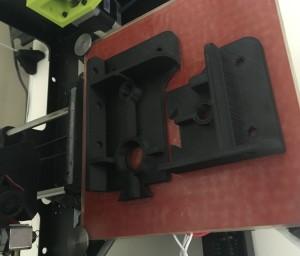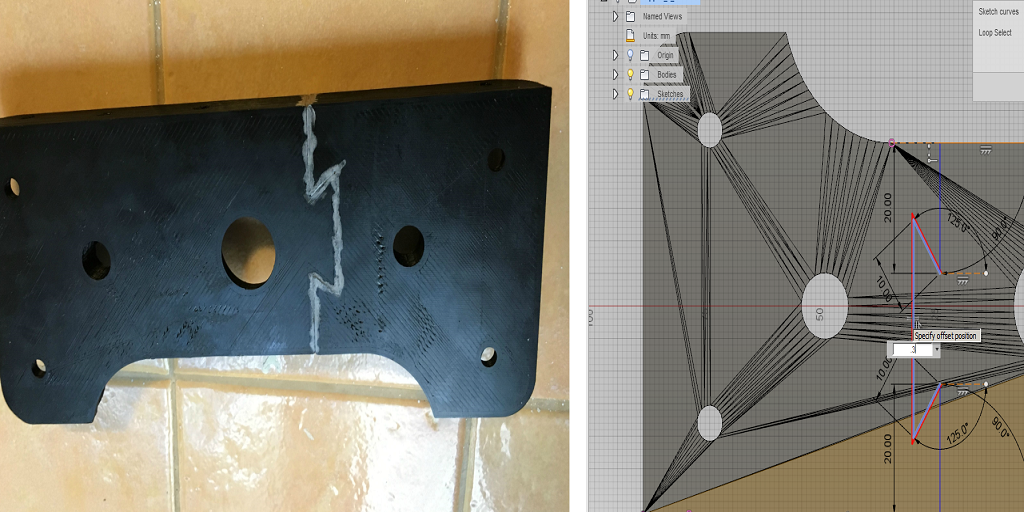
Of course, by no means is it impossible to 3D print larger objects. In many cases, if you are using an average desktop 3D printer, you simply have to do it in parts. There are limitations on the build envelope of the 3D printing machine, which is the length x breadth x height of the machine’s space where objects are actually printed. The most common way people usually 3D print large models is to do it in parts and then glue/acetone them together. For that, it’s all about software tricks, initially. (Then it’s about gluing tricks!)
Sound like too much? Never fear: “SudoICE” has posted some nice instructions on LulzBot for doing exactly this, using ABS for “functional parts,” and acetone and dovetail joints to align the parts. All of this was done in Autodesk Fusion 360’s free software, and here is a brief summary of the instructions SudoICE was nice enough to post on the Lulzbot forum.
“This weekend I needed to print an upper_z plate for my TAZ 6 project I am starting and the Mini I have will not print that large,” the designer explained.
There are six steps posted that are all software-based steps. I will cover some steps in detail and some more generally to give you an idea if you want to try this yourself. Step 1 is simple enough. You download Autodesk Fusion 360 and then upload your part. In Step 2, you will convert the shapefile to a solid. Open the part, then change the workspace to Model. Click Modify -> Mesh -> Mesh to BRep.
Next you select the object and click OK to create a new body. There. Now you should have a solid.
Now you want to draw the same pattern on the other side and connect the segments together. You should have the dovetail shape now, and Step 4 is to extrude a 0.3 mm gap through the parts. You do this by selecting Sketch -> Offset. Then select the middle section and drag it to the left. (See right.) Type in 0.3, press enter, and repeat for the other two lines.
Now zoom in on the corners and trim up extra segments by clicking on Sketch -> Trim. At this point, I will refer you to SudoICE’s instructions because there are several more steps here before you finally get to click Create and then Extrude.
In the next step (you’re almost done, so hang in there), you are exporting your parts for printing and assembly by clicking on Make and selecting one part. Then Repeat to export the second part. There! You are ready to print and assemble your parts. Just open in the slicer of choice (SudoICE uses Cura) and print your parts.
SudoICE’s assembly instructions in Step 6 are fairly straightforward. After you print your parts, trim them and snap them together. One gluing trick is to take the blade of a knife and dip it into acetone, hold it over the seam you want to weld and let the acetone drip onto the seam one drop at a time. Make sure you let the acetone dry for about half and hour. To see the finished product for inspiration, take a look at the photo below.
Now that looks like an over-sized 3D printed part seamlessly welded together, doesn’t it? Great job, SudoICE! What are your thoughts on these techniques? Discuss in the 3D Printing Large Objects forum on 3DPB.com.
